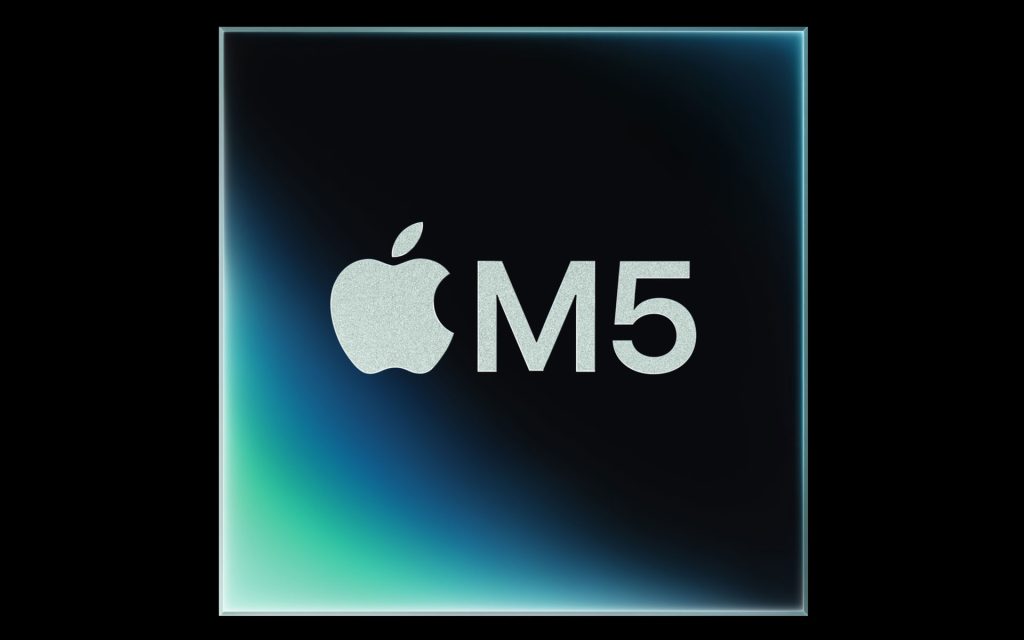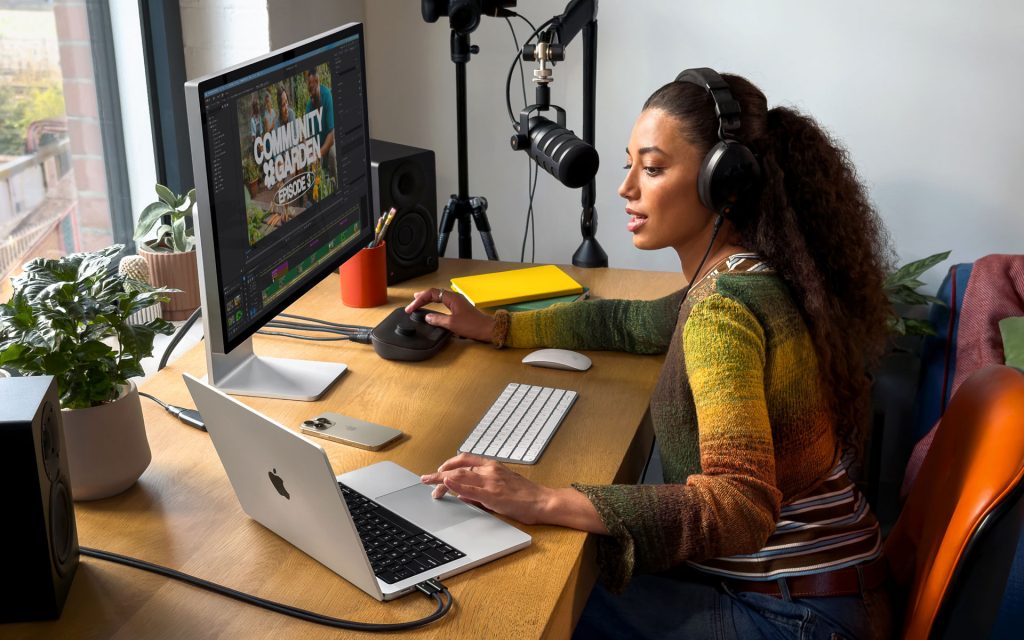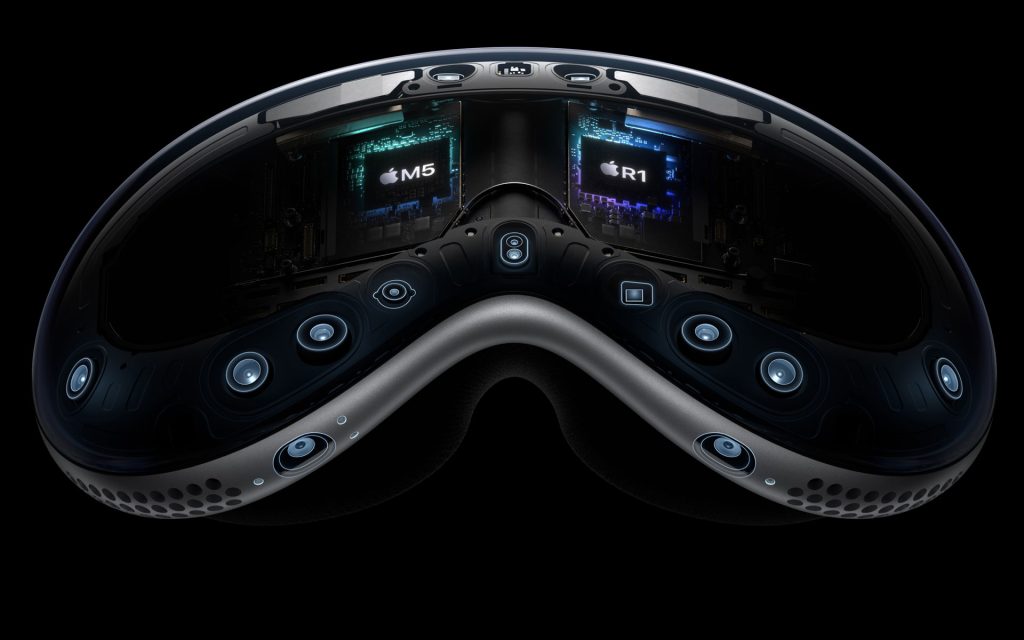Apple unveils the M5 processor powering a trio of upgraded devices
New MacBook Pro 14, iPad Pro and Vision Pro models built around the company’s latest chip, all available soon
KOSTAS FARKONAS
PublishED: October 15, 2025

Surprising nobody at all – not only were there several leaks about this from various sources over the last few days, but the company itself transparently teased as much on Twitter – Apple unveiled its latest processor, the M5, as well as the first three products built around it. The M4 being an already great chip for mainstream Mac computers models meant that the M5 would have to be something profoundly powerful in order to impress – so, since it is not, it does not: it appears to offer a small bump in memory bandwidth (around 30GB/s), a notable bump in GPU performance (up to 40% in certain scenarios) and higher AI performance (not such a big deal right now but might be in the future), but that’s about it.
Just as it did with the M4, Apple put the M5 in its most powerful and expensive tablet first, the iPad Pro. The new models incorporate the company’s new wireless connectivity chip, the N1 – offering Wi-Fi 7, Bluetooth 6 and Thread compatibility – as well as Apple’s CX1 modem for 5G connectivity. The graphics cores of these iPad Pros feature a neural accelerator each (separately from the 16-core Neural Engine itself), which will prove handy in AI-related tasks. These new models also offer considerably faster storage, the ability to output to an external display at 120 Hz (with Adaptive Sync too), plus much faster charging.

Everything else about the new iPad Pros remains unchanged: the same unbelievably thin design, the same excellent Tandem OLED screen, the same capable cameras, speakers, microphones and sensors. There’s no question that the M5 iPad Pro looks like a powerful system and an impressive feat of engineering, but what it can actually do depends on software – which, in the case of iPadOS and the vast majority of its apps, is still limited.
Yours truly got the M1 iPad Pro 13 and the M4 iPad Pro 13 at launch, only to realize that very fact – as well as the fact that Apple will never offer the option of dual-booting macOS and iPadOS. He’s since made his peace with that and will simply not be buying an iPad Pro again – not until some seriously impressive, genuinely useful new functionality on an iPad that needs new hardware come along. It might be a while.
As has also been the case recently, the first Apple laptop that gets its latest processor is the MacBook Pro 14, which – in terms of pricing and overall capability – is still trapped in that weird place between “better than the mainstream MacBook Air” and “not powerful enough for demanding professional workflows”. This one only offers the improvements and upgrades the M5 itself brings to the table, so it will be a bit faster in general tasks and considerably faster in certain graphics tasks (provided enough apps are updated to take advantage of these new AI-infused GPU cores).

Everything else about the new, M5-based MacBook Pro 14 – design, screen, ports, wireless connectivity, camera, speakers, microphones – remains unchanged. Upgrading from the base 16GB of system memory to 24GB or 32GB is still disproportionally expensive, but hey: people now have the option to upgrade the entry-level 512GB SSD up to 4TB of storage. Yours truly hopes that few would be that silly.
The release of the M5 processor also gave Apple the opportunity to upgrade its mixed reality headset, the Vision Pro (it sported an M2). Its system memory remains unchanged at 16GB, but the M5 is offering considerably higher performance, improved battery life and support for content displayed at 120 Hz, which is great. Apple has also made adjustments to Vision Pro’s ergonomics by introducing the Dual Knit Band, an improved headband that helps with the weight balancing (it’s also compatible with the current Vision Pro but sold separately). Whether that headband actually makes it more comfortable to use for longer remains to be seen.

Being offered with the same amount of storage (just 256GB) for the same steep price ($3500), the M5 Vision Pro is still more of an experimental piece of hardware and a statement of intent rather than a commercially ambitious product. Rumor has it that Apple has turned its development focus on its future AR glasses lately, which is not exactly encouraging for its much-discussed headset. Then again, if the company just keeps upgrading it in regular intervals, by the time the M20 Vision Pro arrives people may finally be ready to accept their AR fate, no?





















